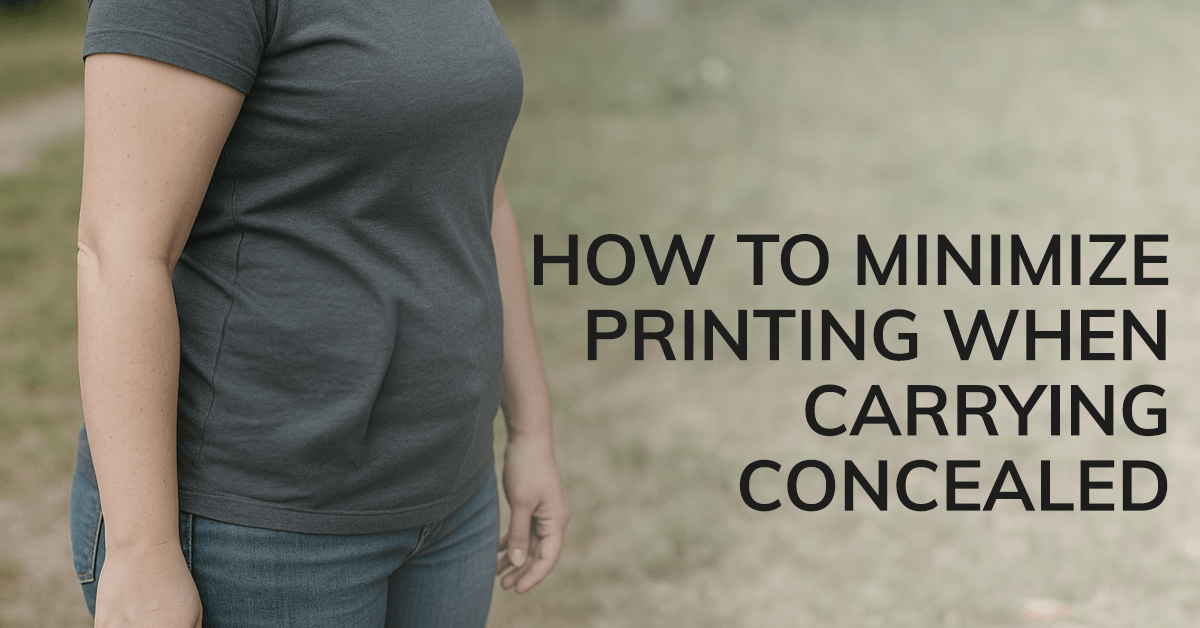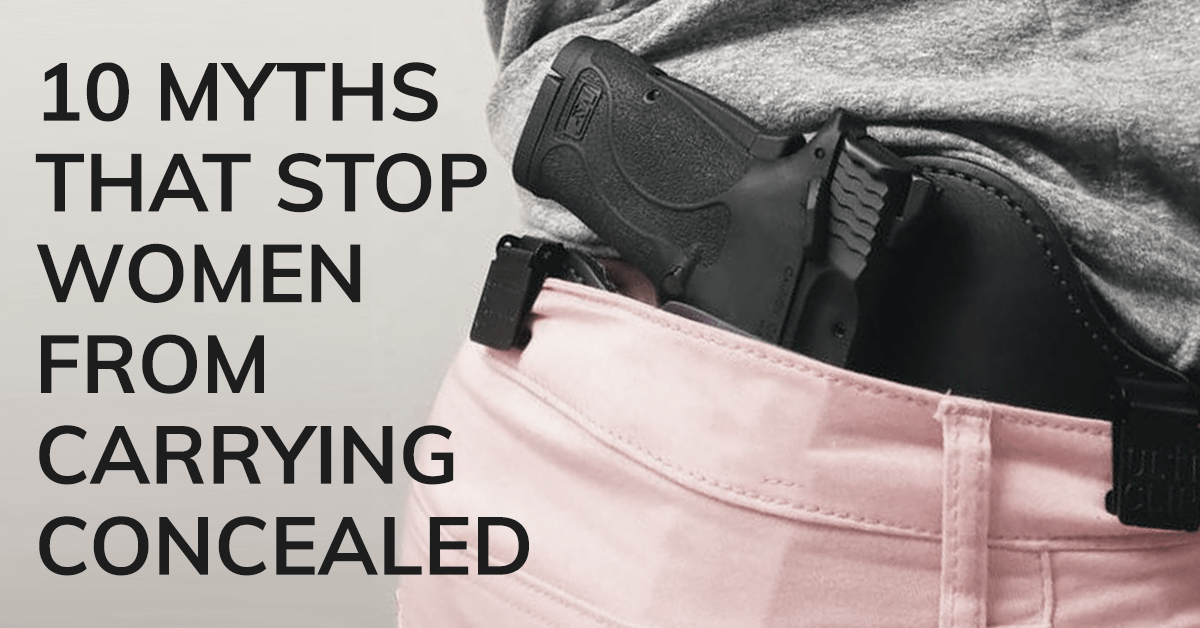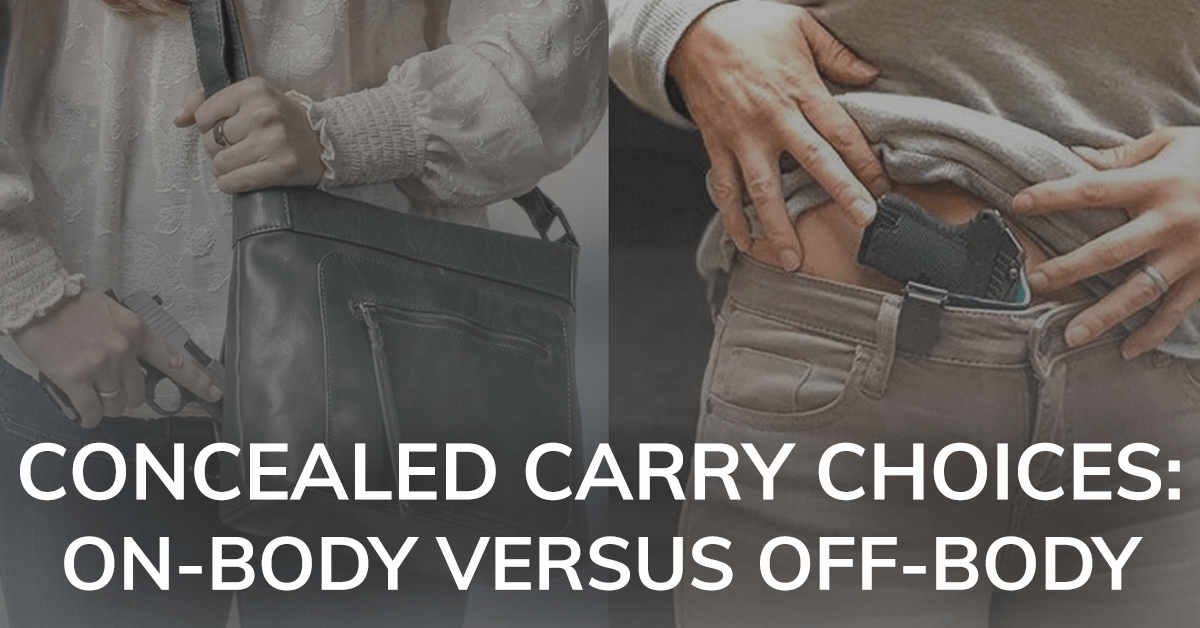Orders Over $100 Ship FREE (USA)!
Orders Over $100 Ship FREE (USA)!
CONCEALED CARRY
(Apparel with holster pockets or concealed-carry features)
PARTS & GEAR
RANGE STYLE
Gift shopping & not sure about size or style? Give a gift card instead!
GIFT IDEAS
EXPLORE
Save 20% on all orders over $200
Gear Up for Christmas
Before You Decide to Carry Concealed
7 min read
Adapted from a post by Brandon, Concealed Nation
THE FOUR LAWS OF GUN SAFETY
1. THE GUN IS ALWAYS LOADED
2. NEVER POINT A GUN AT SOMETHING YOU ARE NOT PREPARED TO DESTROY
3. ALWAYS BE SURE OF YOUR TARGET AND WHAT’S BEHIND IT
4. KEEP YOUR FINGER OFF THE TRIGGER UNTIL YOUR SIGHTS ARE ON THE TARGET
Step 1: Deciding to Concealed Carry
Making the decision to carry a loaded firearm with you is not to be taken lightly. You will be out in public with a huge responsibility to yourself and to others around you. Not only that, but being proficient with your firearm is something of great importance. The last thing you want is to be in a situation where you need to draw your firearm that you intend to use, and have only fired that firearm a few times (or not at all). One very important thing to remember is that the decision to carry a firearm brings about a whole new set of circumstances, and many more factors to consider, than simply owning a firearm for home protection or to keep in your vehicle.
Before you decide to concealed carry, ask yourself the following questions:
- Will I carry a firearm every day, all the time?
- Will I have enough time set aside to practice with my carry firearm?
- Am I responsible enough to carry a firearm?
- Will I keep up to date with my local and federal laws pertaining to concealed carry?
- Do I have the financial means to purchase firearms, ammunition and accessories needed?
- Am I prepared to take the life of another human being if presented with a threat?
If you answered ‘no’ to any of those questions, you may want to reconsider your decision. You are giving yourself a major responsibility and need to be prepared in every way possible before committing.
Step 2: Obtaining your Concealed Carry Permit
Most states in the US require a permit to carry a concealed firearm. These permits are either issued by your County of residence or by the State itself. The process can sometimes be lengthy, time-consuming and expensive. You may run into situations of not knowing how to fill out your application. For example, some local authorities can be very picky when it comes to filling out your reason for wanting a permit. If you put ‘self defense’ as a reason, many applications will be rejected simply for that reason. We recommend talking with current pistol permit holders in your area and ask them questions, as well as local law enforcement. They may be able to lead you in the right direction to make sure that your application is bulletproof (pun intended). It is also extremely important that a person be thoroughly familiar with safe and responsible firearms handling, before deciding to obtain a carry permit.
Step 3: Choosing your Concealed Carry Firearm, Holster and carry method
This is a big task. Choosing a firearm that is right for you is something that should be researched, and then researched some more. If allowed (before you have your permit), stop by a gun shop and take a look at what they have to offer. Ask to see and hold different firearms. Most of the time, you’ll just know. Some will feel too bulky, some will just not appeal to you based on looks. Give them some time in your hands, hold them as you would if you were at the range. Does it feel right? Most importantly, is it a correctly-sized firearm for yourself and your body that you feel would be comfortable for everyday carry?
Additionally, find a local range that offers gun rentals and shoot the guns! Trying a few guns side-by-side is a great way to find out which one/s you prefer. If you have family or friends that currently own firearms, ask them if they wouldn’t mind taking you out to shoot them. Not everyone has the luxury of trying out a firearm before purchasing it, so if you can, definitely take advantage of that.
Tip: The most popular, newer firearms are also the ones you can more easily find holsters and accessories for.
Choosing a holster and carry position can also be a bit tricky. Holsters vary greatly in size, shape, materials and quality. Do some research on places like YouTube, Facebook, and good old asking around. You’ll probably purchase a few holsters until you find the perfect one for your body and your needs. If it’s not comfortable to carry, it’s not right. Make adjustments to your setup until it’s comfortable for everyday use. On a side note, if you decide to carry IWB or OWB, invest in a quality gun belt!!
A quality holster is not something you want to shortchange on. The holster is more than just something to hold the firearm in place, but it can make the difference between safe and responsible carry, and unsafe carry. Regardless of what holster you choose, the trigger guard of your firearm must be completely covered at all times, the holster must hold the firearm securely but also allow easy drawing and re-holstering. Faulty holsters have been to blame for accidental discharges in the past, due to substandard design so this is an extremely important decision.
Step 4: Carrying
So, you’ve received your permit and are ready to concealed carry. Excellent!! The first thing to touch on here: you will more than likely think, for the first week or so, that everyone around you in public knows that you are carrying. This is completely normal and will disappear in time. The key things to remember are:
- No one knows that you are carrying, provided that your firearm is truly concealed.
- You will have the urge to ‘adjust’ your firearm in the holster. Try to avoid this, as it draws attention to yourself. It’s not going anywhere, leave it be
When you start off with concealed carry, you should be very aware of ‘printing’. This is when your firearm ‘prints’ on your clothing (visible outline) if you do things such as bend over, reach up, or if your shirt is too tight. Take a look at yourself in the mirror with your firearm in your holster. Move your arms around like you would if you were walking, and move in ways that you would out in public. If you print, you may want to adjust your attire. If that doesn’t work, your firearm/holster setup may be too large. If that’s the case, try playing around with different options until you get it down. It’ll happen, it just sometimes takes a few tries. Even with some of the best holsters, printing is still a possibility if you have to squat or bend in a certain position. As long as you are aware of the limitations of your carry setup, you should be fine. For activities that may require more active motions like this (bowling for example), a belly band and appendix or cross draw carry may be more appropriate.
Again, make sure that you are aware and up to date with the laws. For example, there are places that you cannot legally go in the US with a firearm such as the Post Office or a Federal Government building.
Step 5: Practice, Practice, Practice, and then Practice some more
This cannot be stressed enough. Practicing with your firearm is one of the most important things that you can do. Here are a few things that you should be practicing on a regular basis:
- Shooting. Join a range and be there on a regular basis to practice with your carry firearm.
- Practice shooting with the same ammunition you carry. Different ammo behaves differently. If you know what to expect, you’ll have less of a surprise should you need to use your firearm in a stressful situation.
- Drawing. Practice drawing your UNLOADED firearm from your holster. If you are ever in a situation where you need to get it quickly, this is where muscle memory will come into play. In a stressful situation, you need to be alert and able to draw with as much consistency as if you were practicing in your home.
- Last but not least, it is highly recommended that all who choose to carry a firearm receive at least some basic level of defensive handgun training. Going to the range and shooting is great practice, but a good instructor in a controlled environment can greatly boost your confidence, as well as highlight limitations you may not have considered before.
Some general housekeeping
Here is a list of other things to consider:
- Keep your firearms clean and operational. It is recommended to clean your firearm after each shooting session and check for any worn or broken parts.
- Keep firearms out of reach of children (or anyone else that should not have access to them).
- Tactical training is highly recommended. Look for courses in your area and sign up.
- Let it be known to very few people that you concealed carry.
- Do not ‘show off’ your firearms. We know that your first firearm can be very exciting, but encourage refraining from showing it off to friends.
- NEVER point the barrel toward something that you are not willing to destroy (whether the firearm is loaded or unloaded).
- TREAT EVERY FIREARM AS IF IT WERE LOADED AT ALL TIMES.
- Respect the power that you now carry around with you.
- When holstering your firearm to go out, or de-holstering it when you get back home, make absolutely sure that at that very second the firearm is in your hand, your attention is focused on that firearm and the firearm only. Do not get distracted for even a second when a firearm is in your hand.
Conclusion
We hope that this article has been helpful to those that are new to concealed carry. We have an excellent community on our Facebook page and we encourage questions and dialogue related to these topics. Please use your own judgement if you receive answers from people in our community. When in doubt, ask someone else that you know and trust!
Also in Carrying a Gun: Making the Decision

How to Minimize Printing When Carrying Concealed
3 min read
Here are a few tips to help reduce printing and build your confidence to carry more comfortably and discreetly.

10 Myths That Stop Women from Carrying Concealed
5 min read
We're clearing up some common myths so you can feel more confident about your decision to carry.

Concealed Carry Choices: On-Body Versus Off-Body
4 min read

